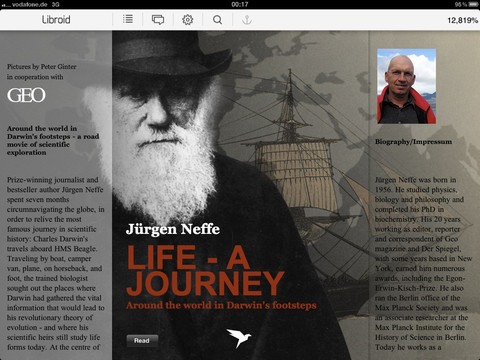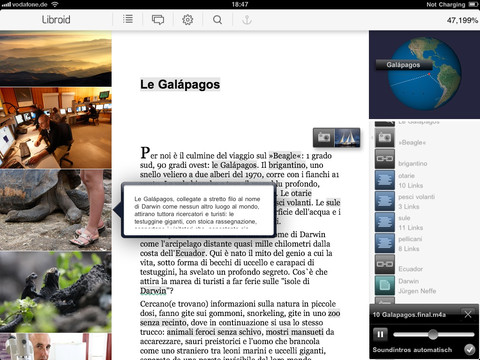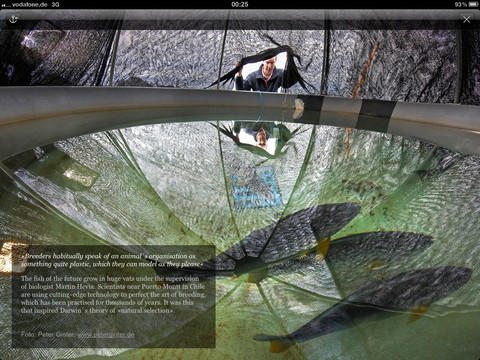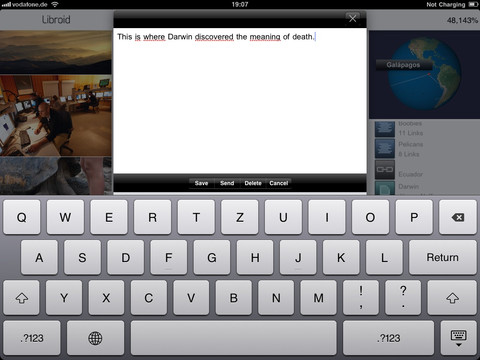Jürgen Neffe spent 7 months circumnavigating the globe, in order to relive the most famous journey in scientific history: Charles Darwin's travels aboard HMS Beagle. Traveling by boat, camper van, plane, on horseback, and foot, the trained biologist sought out the places where Darwin had gathered the vital information that would lead to his revolutionary theory of evolution - and where his scientific heirs still study life forms today. At the centre of this research stands the human being, evolution's most sophisticated model and the greatest threat to the natural world that shaped us and is our future.
The first thing you will notice about a Libroid is that page-turning has been replaced by scrolling text. Your position in the text is indicated in percentage terms, which you also use for finding text positions. The key to Libroid technology is the triple column. In the central area lies the text, where it can best be absorbed by the eyes; in the margins left and right are narrower columns, which are read by the “third eye”. These might contain photos, Internet links and original sources, or even entire books, maps, musical scores, graphics, footnotes etc. It is up to the reader to touch these symbols and thumbnails. The three columns are dovetailed in such a way that the related contents of text, image, link or source, always line up at the centre of the screen – “at eye level”. If you scroll through one of the columns, the others follow, realigning the linked content. By rotating the Libroid from a horizontal to a vertical position, the two side columns disappear, to allow for “pure” undistracted perusal of the central scroll text.
The dynamic “content management system” of the triple column technology enables the Libroid to house several language-versions of any particular text, in identical formats. New translations in other languages can be added at any time. The various translations are also dynamically linked so that readers can switch between languages at will.
Libroids can be published, purchased and downloaded simultaneously all around the world. Readers can add their own comments and share them with other readers through the web. This novel “social reading” function opens the doors to virtual reading communities and book clubs across the globe.
Video tutorial and previews of the app:
[video:http://www.youtube.com/watch?v=ciZghUz8elg]






